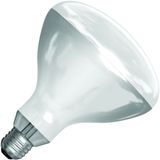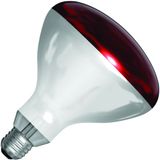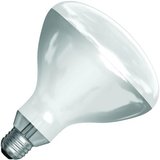SPL Lighting Infrared lamps









spl lighting ir lamps families and form factors
SPL’s IR catalogue covers the three practical wavebands used on site.
- Short-wave (IR-A, ~0.78–1.4 µm): quartz tungsten-halogen, instant response, deep penetration for fast curing and shrink tunnels. Formats include double-ended R7s (78/118/220 mm) at 500–2000 W and single-ended E27 capsules at 150–375 W with hard-glass envelopes.
- Medium-wave (IR-B, ~1.4–3 µm): quartz tubes with internal reflector; ramp in ~1–2 s, efficient on paints, inks, plastics. Typical 300–1500 W per tube, 230 V or 400 V.
- Long-wave (IR-C, ~3–10 µm): ceramic emitters and panels for surface warming and gentle process heat; 150–1000 W blocks, up to 20 k h life.
Reflector options—gold, ruby/red coat, and diffuse aluminum—shape the beam and cut visible glare. Mounting kits hold fixed, angled, or array configurations for zoned lines.
spl lighting infrared lamps technical parameters you design with
- Power and voltage: 150–2000 W at 230/400 V AC; inrush is minimal versus resistive steady-state, so C-curve MCBs typically suffice.
- Thermal response: <1 s (IR-A), ~1–2 s (IR-B), minutes to steady state (IR-C).
- Lifetime (typ.): 5–8 k h for quartz halogen, 8–12 k h for medium-wave quartz, 10–20 k h for ceramic—assuming Tc and mounting orientation are respected.
- Optics/efficiency: gold reflectors return >90% of rear radiation; ruby glass trims visible red in front-of-house warmers.
- Mechanics: R7s ends or high-temp E27/E14; holders must be T-rated (T180–T300). Quartz must not be handled with bare hands—oil spots create hot points.
- Control: phase-angle or PWM with SSR/thyristor packs; closed-loop with thermocouples/pyrometers on demanding lines.
- Safety: guards and clearance tables prevent contact; luminaires provide IP—lamps themselves are typically IP20.
Collections and series snapshot
- Short-wave “QH-SW”: double-ended R7s, clear or gold-back, 500–2000 W; used in PET preform heating, shrink tunnels, adhesive curing.
- Medium-wave “QH-MWR”: single or twin quartz with integrated reflector, 300–1500 W; print/paint drying, thermoforming.
- Ceramic “CER-LW”: long-wave tiles and bars, 150–1000 W; food service warmers, enclosure anti-condensation, low-temperature bake.
- Spot capsules “CAP-IR”: E27/E14 red-coat for local warming, 150–250 W; supplied with wire-guard and swivel brackets.
spl lighting industrial ir lights application notes
Production lines benefit from zoned arrays: split the frame into 3–6 channels so ramp/hold/cool steps are programmable. Align waveband to material absorption—polymer films and powder coats favor MW, dense substrates or fast shrink favor SW. Keep 20–40 mm air paths behind reflectors; publish watt-loss for enclosure heat-rise. For conveyor work, size beam width to belt and overlap by 10–15% to avoid cold stripes. Use thermally stable cable (silicone/fiberglass) and ceramic terminal blocks inside the head.
Accessories, holders, and reflectors
High-temp R7s ceramic lampholders with spring clamps, E27 porcelain sockets, stainless wire guards, and perforated side shields are standard. Parabolic extrusions produce tight lanes; diffuse reflectors even out proximity heat. Adjustable yokes (0–60°) and sliding rails simplify focus during commissioning. For harsh areas, specify tempered front glass and stainless hardware.
Process matching and tuning tips
- Powder coating: IR-B pre-gel with quartz reflectors shortens oven dwell.
- Adhesives and laminates: IR-A bursts reduce clamp time; watch substrate scorch—use duty-cycle control.
- Food service: red-coat capsules cut glare; set ~0.6–0.8 W/cm² at the pass height.
- Anti-condensation in cabinets: ceramic bars at low watt density with bimetal or PID control.
spl lighting therapy infrared lamps usage and safety
Near-IR spot units (150–250 W E27, red glass) are supplied with guards and tilt stands. Maintain 40–60 cm distance, limit exposure per manufacturer tables, and avoid use on insensitive or compromised skin. These are non-medical devices unless explicitly certified; for clinical protocols, the certified model and instructions apply.
Integration with luminaires and controls
Heads bolt into SPL brackets or linear housings; pair with digital SSR racks for clean PWM and add door interlocks near moving machinery. For camera-heavy spaces, PWM >1 kHz avoids banding on visible spill. Earthing of reflector trays and braided feeds prevents nuisance trips when SSRs switch.
Selection checklist for engineers
- Waveband vs material: IR-A for fast, deep; IR-B for coatings/plastics; IR-C for surfaces/comfort.
- Format & socket: R7s length, E27 capsule, or ceramic tile; confirm holder T-class and orientation.
- Power density: size W/cm and beam to working distance; overlap zones to eliminate striping.
- Control method: phase-angle or PWM; closed-loop sensor type and placement.
- Environment: guards, front glass, IP of the housing, cable temperature class.
Maintenance: specify spare quartz tubes and guards; avoid fingerprints on replacements.